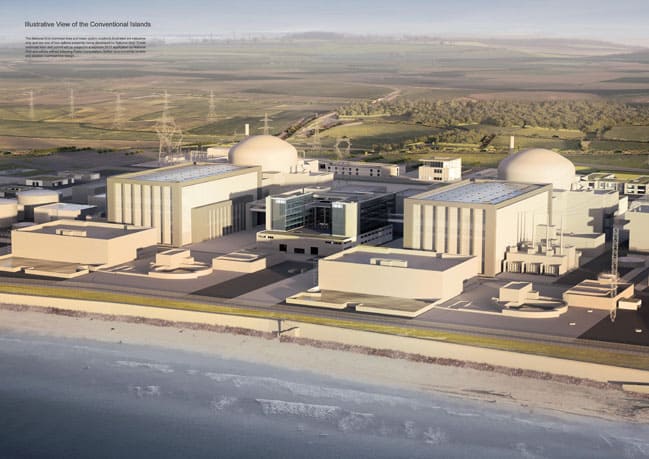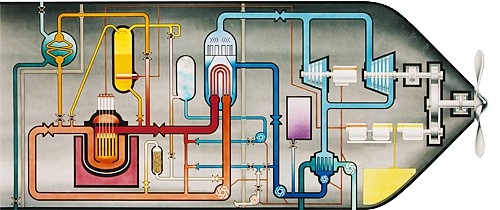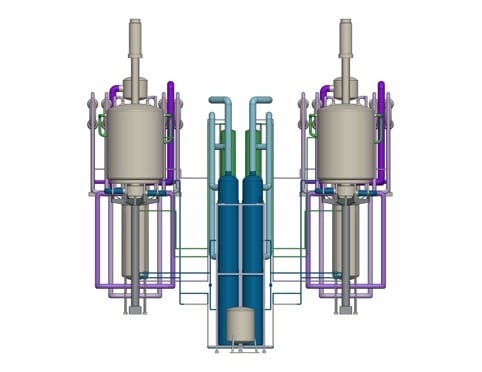The situation over Britain’s proposed fleet of new nuclear reactors can charitably be described as a mess, and it isn’t one that looks likely to be tidied up any time soon. There’s still no final decision on whether Areva is definitely going to build Hinkley Point C, even though everyone assumes that it will (the decision has been described as ‘imminent’ for at least the past two years). And the Chancellor’s blandishments to convince Chinese investors to stump up the cash that apparently can’t be obtained from anywhere else means that the UK has now agreed that a Chinese-designed reactor (of as-yet unknown and unapproved technology) will be built in Essex at some point in the future.
Along with the uncertainty and delay over Hinkley C, there are lingering concerns about the reactor design. The Areva EPR is not yet operational anywhere and the two flagship projects, in Flamanville, Normandy and Olkiluoto, Finland, are both seriously behind schedule and over budget. Understandably, many people, even within the industry, have doubts over the wisdom of hitching the UK to that particular wobbly wagon.

To digress a little, the peculiar mental gymnastics which lead the UK government to believe that the private sector is always more efficient, and that the UK state should not own energy providers; and yet to be happy to welcome the Danish public sector to build, operate and own most of the country’s offshore windfarms, the French public sector to build, operate and own much of the electricity generating infrastructure and to build nuclear reactors, and the Chinese regime (about which it is difficult to say anything positive, except that it controls a lot of cash) to buy into civil nuclear, continues to be inexplicable.
So if Hinkley C were cancelled, what then? There is still widespread agreement that the UK needs nuclear: its low CO2 emissions in use and advantages for energy security against uncertainty over hydrocarbons are unarguable, and the practicality of renewables for baseload power generation is questionable. The immediate future would see hopes shifted to another as-yet unproven design, Westinghouse’s AP1000, which is somewhat simpler in engineering terms than the EPR. Yet another imported design, the Hitachi ABWR, is waiting in the wings, still going through the Health and Safety Executive’s Generic Design Approval (GDA) process, although it does at least have a few units up and running in Japan (and built on schedule and budget).
As to why the UK is importing all these designs: the country hasn’t built a reactor of its own design since the 1980s, and cutbacks in R&D budget by energy companies mean we don’t have any reactor designs under development. Frequently our readers call for a UK design to be developed. Is that a practical proposition?
In terms of expertise, the UK is certainly capable of designing a reactor. Pressurised water reactors are actually built in the UK: Rolls-Royce builds and maintains the reactors for the Royal Navy’s nuclear submarines, and is currently developing a third-generation unit for use in the proposed replacement for the Vanguard-class Trident boats. This could be seen as a distinct advantage, because small PWRs are the basis for small modular reactor (SMR) technology, which is often stated as being a more practical option for the UK. SMRs can be built in factories, rather than needing specialised foundries (at least in theory: none are in production yet) and can be scaled up with multiple units forming the core of a large power station. The UK also has expertise in fabricating this type of structure, although not necessarily with techniques that are tried and tested in the nuclear sector: such techniques as near-net shape forging would have to be approved by regulators.

Another option is to eschew the PWR route and develop something else, with molten salt-fuelled thorium reactors (liquid fuelled thorium reactors, or LFTRs being frequently put forward. These have several advantages, but nobody has ever built one — the closest version, which operated in the US in the 1970s, did not include the vital step of purifying thorium fuel within the reactor.
If it’s true that the UK is incapable of developing a fighter jet on its own (and we gave our opinion on that a few months ago) then it must surely be beyond our capability to sort out all the problems with LFTR development. But there are interested parties in the US and thorium research is underway in China: this sounds like a prime candidate for a multinational research effort, something which would probably be more palatable to many than the current proposed Chinese investment in UK nuclear.
So a UK-designed reactor, especially an SMR; or participation in an international effort to perfect LFTRs, are certainly possible in theory. But two things are absolutely certain: they won’t be quick and they won’t be cheap. Make no mistake; the technological challenges are huge, and proving the designs are safe within the added strictures of post-Fukushima reactor design (which includes extra layers of safety features which must be followed, even though a Fukushima-style event is incredibly unlikely in the UK) adds extra cost and difficulty. Whether there would be an appetite for embarking on such an adventure has to be unlikely in the current political climate.

Which is why, in the short term at least, importing reactor designs is seen as an attractive option. Another US firm, NuScale, has stated its intention this week to deploy its SMR design (also as-yet untried) into the UK, and Hitachi still has an offer on the table to build PRISM reactors at Sellafield. PRISMs are a modified version of a molten metal-cooled breeder reactor which can use plutonium as fuel, and the UK has the world’s largest stockpile of plutonium, currently classified as waste because there’s no commercially viable way to use it (plutonium can be used as an element of mixed-oxide (MOX) fuel, but making MOX is very complex and rather expensive: it’s been likened to making a fine Wedgewood tea-cup. Moreover, as plutonium decays over time it becomes less suitable for MOX). But, seeing as we’re already committed to putting at least one new reactor design through the GDA from scratch, it seems that PRISM might actually be a viable option: it is at least suited for the UK’s particular situation. If only we weren’t dependent on that Chinese money. But then, if Hinkley C were cancelled, we wouldn’t be…
What seems certain, at least to us at Engineer Towers, is that the UK should definitely be developing reactor technology. This could be for future deployment in the UK, to supplement or succeed the proposed fleet of imported technologies; and with an eye to exports, especially if researchers can leapfrog the current paradigm and look at future requirements. It has to be sheer folly to let our expertise lie idle; and techniques like near-net shape can never be implemented in nuclear if we don’t try.




Report highlights significant impact of manufacturing on UK economy
I am not convinced that the High Value Manufacturing Centres do anything to improve the manufacturing processes - more to help produce products (using...